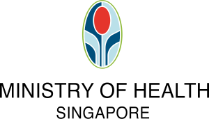How Positive Outlook Can Transform Our Health & Aging

Up: How Positive Outlook Can Transform Our Health and Aging
Book Review
We all know that stress can hurt our health, but so can constant pessimism. Our outlook on life impacts our health and how we age more than we think. In Up, Hilary Tindle argues that a positive outlook is often ignored as an important part of healthy living skills.
Tindle’s ‘7 Steps of Attitudinal Change’, established based on research and her professional experience, aims to help people orient their outlook on life to improve their health. Her methods for each step are practical and easy to implement in daily life. Recognising that one method may not work for everyone, Tindle also provides alternatives for people to find what works best for them. The use of case studies also makes her methods relatable and accessible.
Optimistic and engaging, this is an easy-to-read and helpful book that encourages us to know ourselves better so that we can take charge of our health.
Excerpt
We – meaning people in general, but also the larger medical and scientific community – may understand that there is some relationship between outlook and physical health. What we may not fully realize, however, is just how intimately tied our outlook is to our own health and aging over the course of our lives, from our humblest beginnings as babies to the adults we are today, to the older people we’ll become tomorrow. Our individualized patterns of thinking and feeling, some of which can be recognized as early as preschool, both precede and predict our risk of heart attack, stroke, and cancer: the number one, two, and four causes of death among U.S. adults according to the latest CDC report. What’s more, attitudinal traits predict the very risk factors that are known to cause these major illnesses of aging – risk factors such as smoking, obesity, high blood pressure and cholesterol, and diabetes. Considered in this light, our outlook may be our earliest “risk factor” for accelerated aging – before all the other traditional risk factors such as smoking and cholesterol levels that we’ve come to know and fear. Each one of these traditional risk factors has the potential to rob us of a little – or a lot – of our youth. Having more than one, especially if they remain untreated, can significantly interfere with our enjoyment of adulthood and even shorten our lives. Couple that with an unhealthy outlook and we may be facing a mountain of risk. But there is an upside here: a great deal of aging is actually modifiable, meaning that we as individuals can do something about it. We are not entirely pawns of fate. We do have at least some say in the rate at which our body ages.
(pp. 14-15)
Check availability here: http://catalogue.nlb.gov.sg/cgi-bin/spydus.exe/ENQ/EXPNOS/BIBENQ?BRN=200135291
Check availability of large print version here: http://catalogue.nlb.gov.sg/cgi-bin/spydus.exe/ENQ/EXPNOS/BIBENQ?BRN=200180360
Contributed by Viki Chua, National Library Board (NLB).
Availability of the book title can be checked via NLB’s online catalogue at www.pl.sg.







